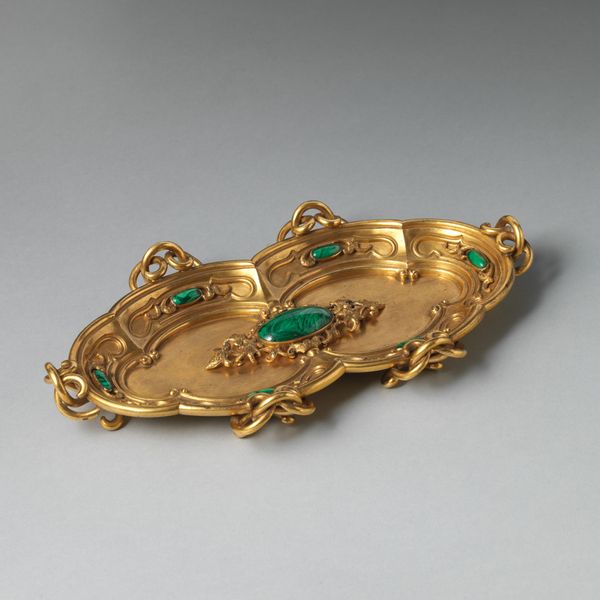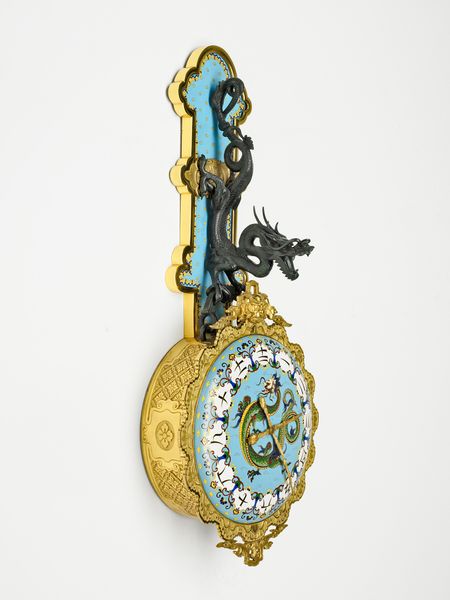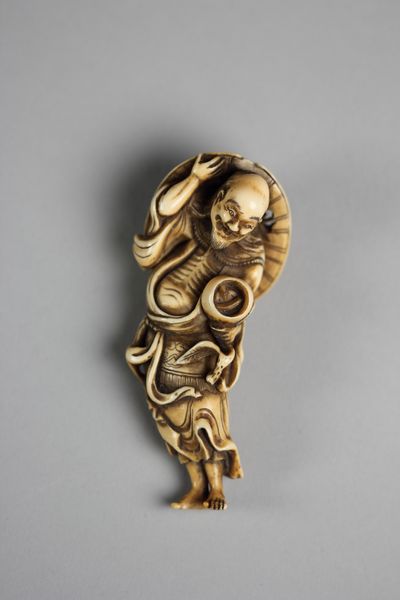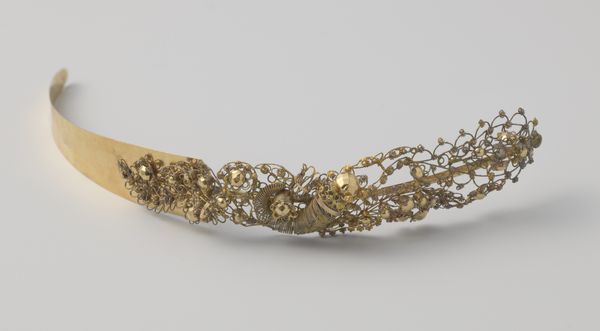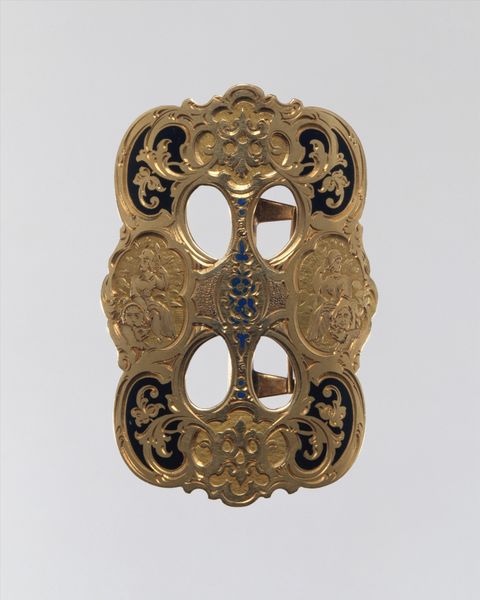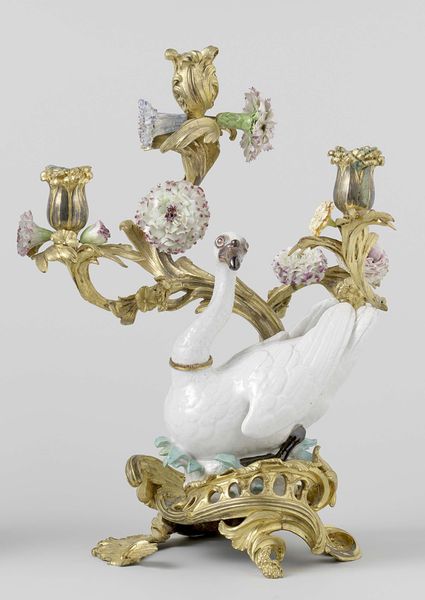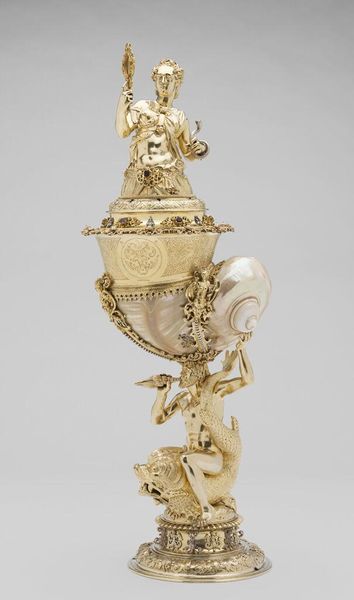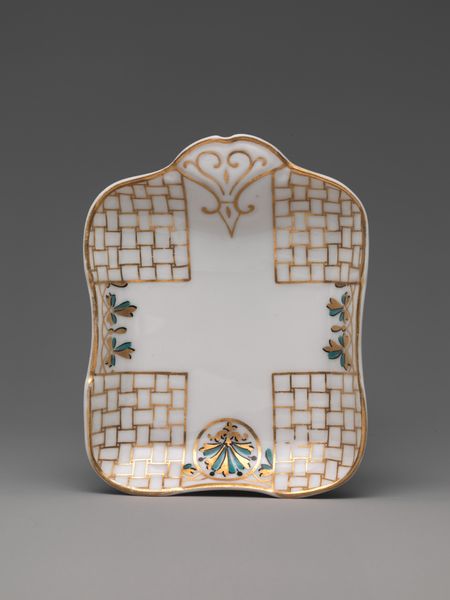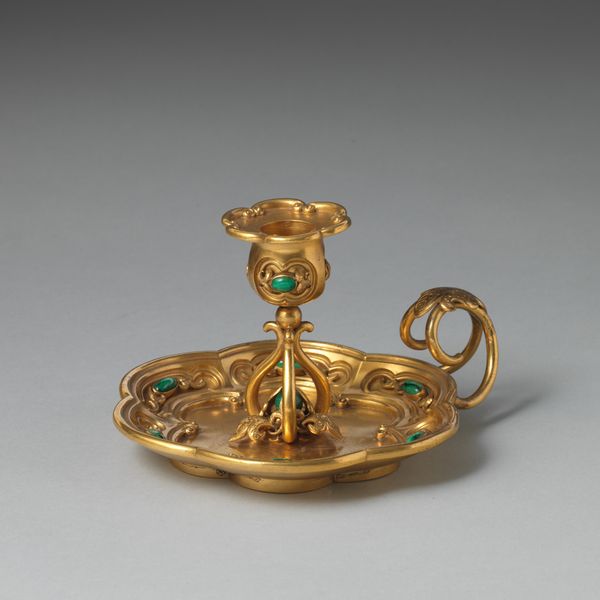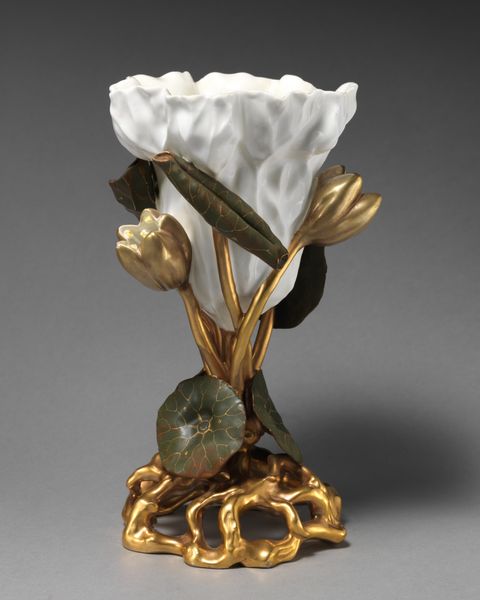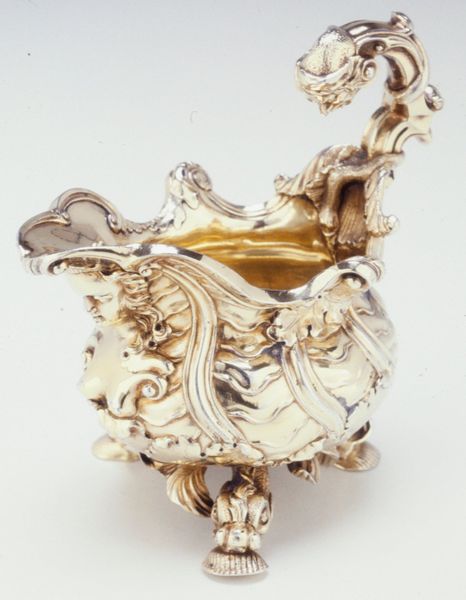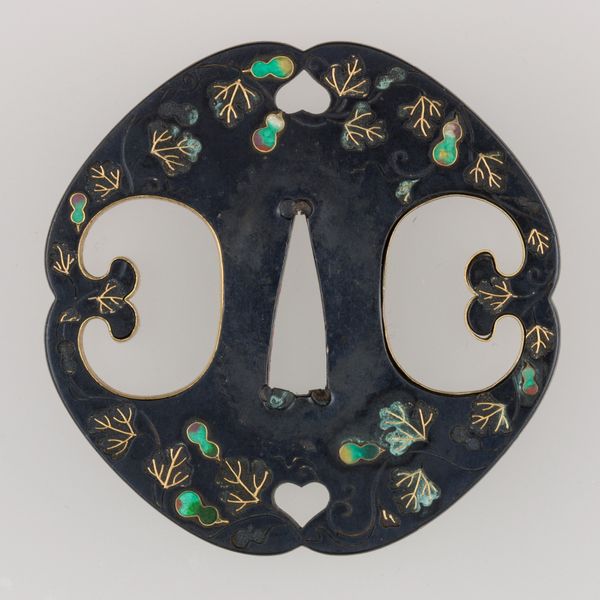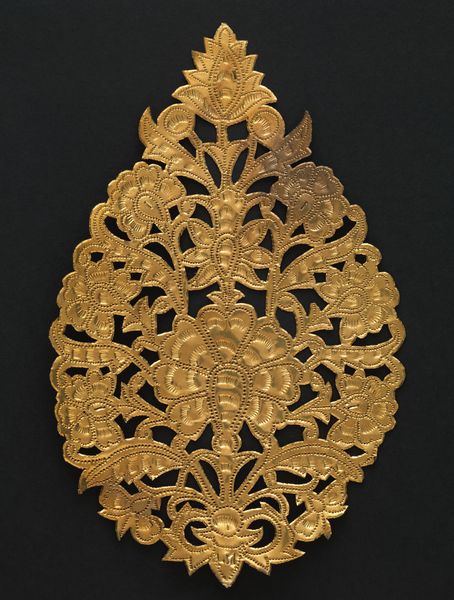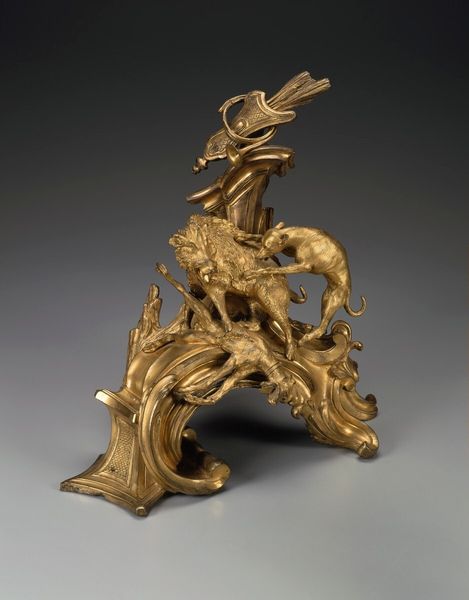
assemblage, metal, bronze, sculpture
#
assemblage
#
metal
#
bronze
#
sculpture
#
decorative-art
Dimensions: Height: 8 in. (20.3 cm)
Copyright: Public Domain
Curator: Well, hello there! We’re standing before a delightful object: a bronze calendar made around 1851 by Asprey. What catches your eye first about it? Editor: Definitely that shimmer, all that ornate golden metal. It has a decadent vibe; like time itself is a jewel to be treasured. And the scale is unexpectedly domestic, isn’t it? I want to know who woke up to that calendar every day. Curator: Indeed! Asprey was known for such luxurious goods, catering to a wealthy clientele. Calendars, particularly ornate ones like this, became increasingly popular as symbols of status and control over one’s schedule. Notice the malachite accents adding to that sense of opulence? Editor: Oh, the green cabochons! Malachite often carries associations with nature and renewal. Its addition turns time into a garden. Calendars themselves always fascinate me; they are, at their heart, symbolic systems. The organization of time has deep cultural roots, influencing everything from religious observances to agricultural cycles. Do you suppose its owner took it for granted, or were they conscious of those associations? Curator: A delicious question! Perhaps a little of both. These objects are strange cultural touchstones—on the one hand very functional, on the other laden with aspiration and ideas about ourselves and how we fit into, or above, nature's clock. To own a calendar is to partake in an old drama of meaning! Editor: Looking at it this way helps me think about my own relationship with time too. Thank you for that! Curator: And thank you! Examining these items can alter one's view—time warps! I appreciate the insights on offer.
Comments
No comments
Be the first to comment and join the conversation on the ultimate creative platform.
